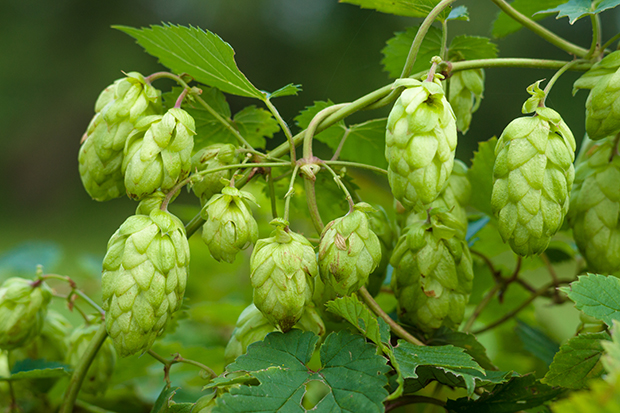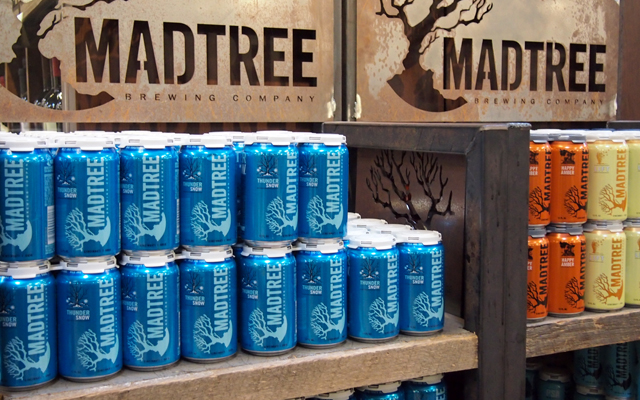
Knowing a consumer can be a make-or-break situation when it comes to being successful outside a taproom. Using information provided by industry experts tied in with some personal experience, and a dash of luck, consumers can be repeat customers instead of a one-off variety when it comes to grocery or beer store shelves.
Although some have ventured guesses as to what will be the “Next IPA,” the industry still points to IPA being the next IPA. Expanding inside the realm of IPAs have been a way for brewers to capitalize on what started as a fad and now has become the lifeblood for many when it comes to the balance sheets.
The traditional hop-forward ale — which by some numbers is upward of 33 percent of all craft beer sales in the U.S. — has many cousins now, most notably in either higher or lower alcohol strengths.
Colors and flavors aside, a quaffable, lower-alcohol variety, most commonly called “sessionable” IPAs have become popular, either as a marketing tool or as a gateway to those 40 percent of macro light beer drinkers that think craft beer is just too strong to drink.
Breaking down how to deliver different sections of the same style is what has become a numbers game. Baltimore’s Heavy Seas expanded its IPA folio to start 2015 by introducing a sessionable IPA (Crossbones) along with a Double IPA (Double Cannon) to compliment its flagship IPA, Loose Cannon, which takes up 54 percent of its production.
Heavy Seas Director of Marketing and Hospitality, Fred Crudder, said that using research gained from consulting newsletters, from both Benj Steinman and Bump Williams, along with interactions with distributors and numbers from the Brewers Association helped develop Heavy Seas line of attack back in the summer of 2014 for the IPA roll out.
“Our big concern was don’t make too much of it and don’t make too little,” Crudder said. “But we had no idea what the sales velocity was going to be in January.”
Because of an expansion, Heavy Seas wasn’t able to get Crossbones made and out the door until the middle of the winter, but it worked. “January and February are usually pretty cool for beer sales,” he said. “So doing it in the beginning of the year was a nice slow roll out for us to build inventory.”
Williams, a beer consultant since the mid 1980s, — including starting the Bump Williams Consulting firm in 2008 — said smart brewers that want to stay in the industry, and on shelves, will have at least one, if not more IPAs available on the market.
“If you don’t play in both of those arenas, you are telling that certain percentage of craft beer consumers that you don’t want their business,” he said. “If I am in the IPA business and I see a need for sessionability so I can sell more product and increase frequency of purchase occasions … then here comes my sessionable beers.”
Williams admits that a wide percentage of craft brewers would never want to market a “light” beer because of the negative connotation to many macro-made products, but “sessionability is synonymous with easy drinking and paired with the term craft beer it means easy drinking craft beer,” to the consumer.
Williams adds that craft brewers have a leg up when it comes to having the ability to do consumer research. It is as far away as the bar stool in each brewer’s taproom. “Whether they get 10,000 people through the door that year or 500,000 … you can ask the people that come into the tasting room about what they like,” said Williams. “You can ask them what they like to drink. … Ask them where they buy it, how often and what they buy with it. Do they like 750s? How long have they been drinking IPAs? What do they drink if they don’t drinking IPAs? That kind of consumer research is what helps.”
He also advised for brewers to get out in the marketplace and talk to retailers on and off premise. “Talk to distributors and listen to what they are telling them what’s going on,” he said. “That is how smart people are staying ahead of the curve.”
On the flip side, some breweries stray from outside influences. Co-owner and co-founder of Maine Beer Co., Dan Kleban, says Maine Beer Co. relies on what it likes and it happens to be IPAs.
Some of those IPAs have won numerous awards and have been consistently on lists as some of the best beers in the U.S. Beers like Lunch, Another One and Mo frequently hit high 90s when being scored on a scale of 100 from BeerAdvocate and RateBeer.
“Our guiding principal is we make beers we want to drink. So we are not a brewery that does market research and looks for the next hot thing,” Kleban said of Maine Beer Company’s 12,000 bbl facility which sells to the New England and Mid-Atlantic states along with some shipments to Kleban’s hometown of Chicago. “We just rely on our taste buds and if it is different from what we have in the market then we will make it,” he added. “I don’t know if it is unorthodox, but it’s not traditionally the way, maybe, bigger industrial brewers would follow.”
Kleban agrees that market research is an option, but just not for his group. “There is a certain authenticity that consumers can appreciate and can somehow sense when breweries put out beers they have a passion for and not just doing it because of market research,” he said. “That doesn’t mean that route doesn’t work. It’s extremely successful for a lot of breweries. But our model works for us and it seems to work for a lot of craft breweries. You have a passion for what you like and you make it the best you can possibly make it. I think that model we follow works for us and we don’t intended to shift away from that.”
For now, IPA is king. The trend should continue, yet brewers are always looking to get that leg up and that’s where creativity and research can go hand-in-hand. “Until an alternative presents itself, what the future is for the consumer, what they eventually want and is it different from what they want now?” asked Crudder. “If you figure it out, call me because everyone wants to figure out what the next big thing is but it doesn’t present to be anything other than hoppy beer.”





1 Trackback / Pingback